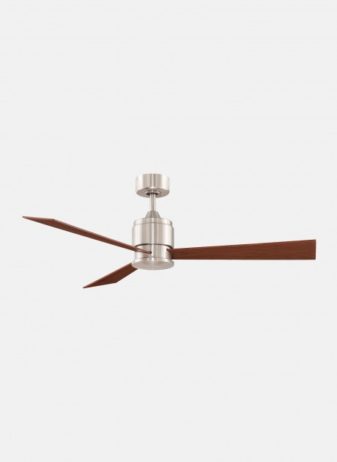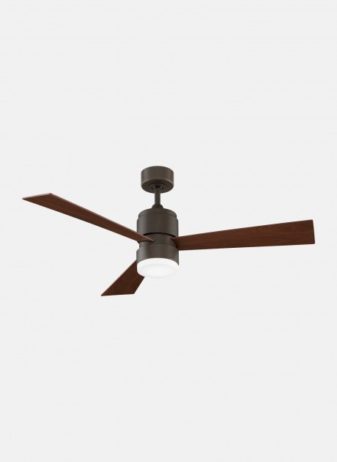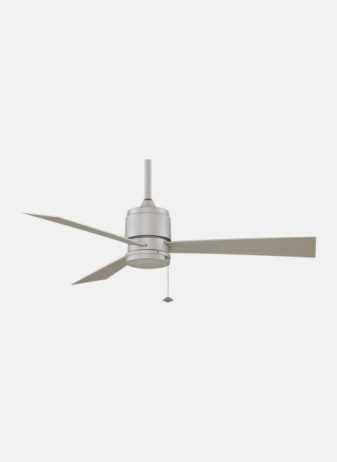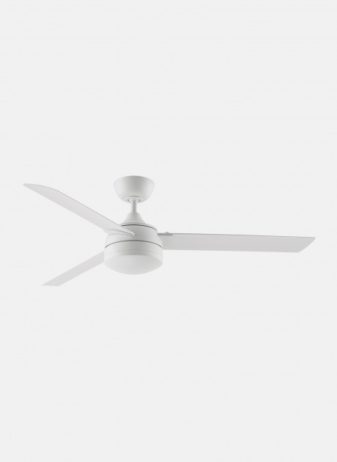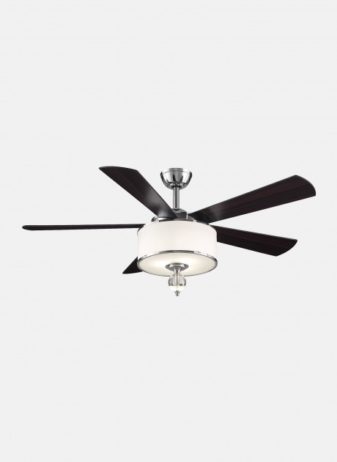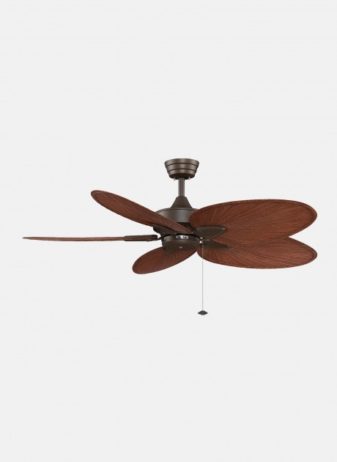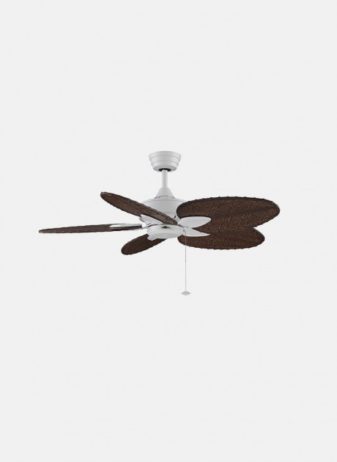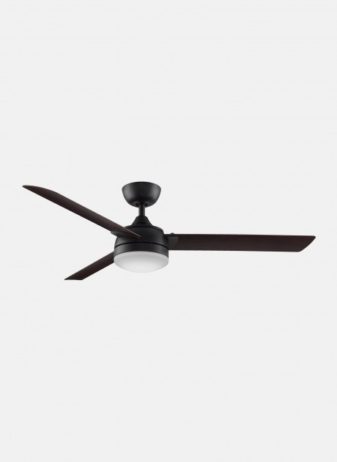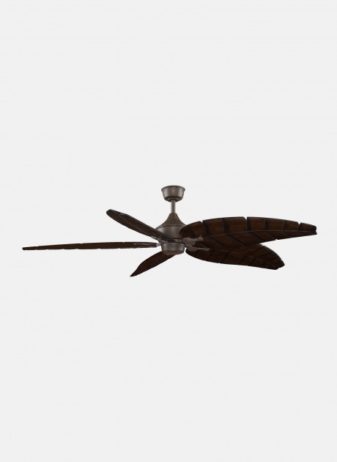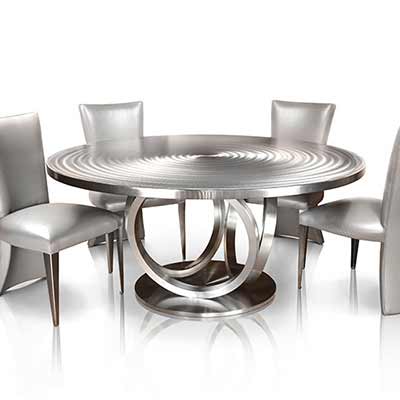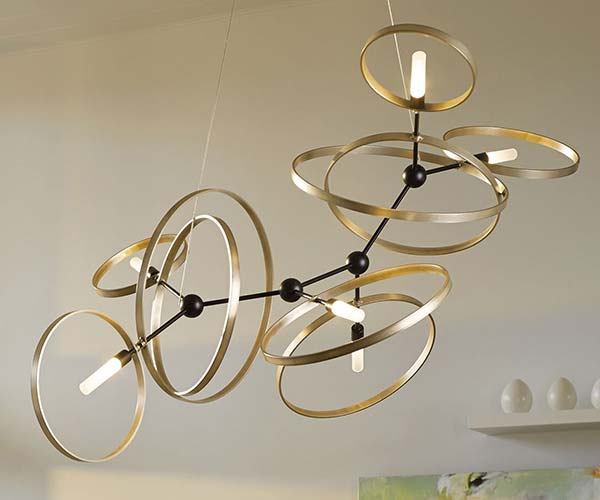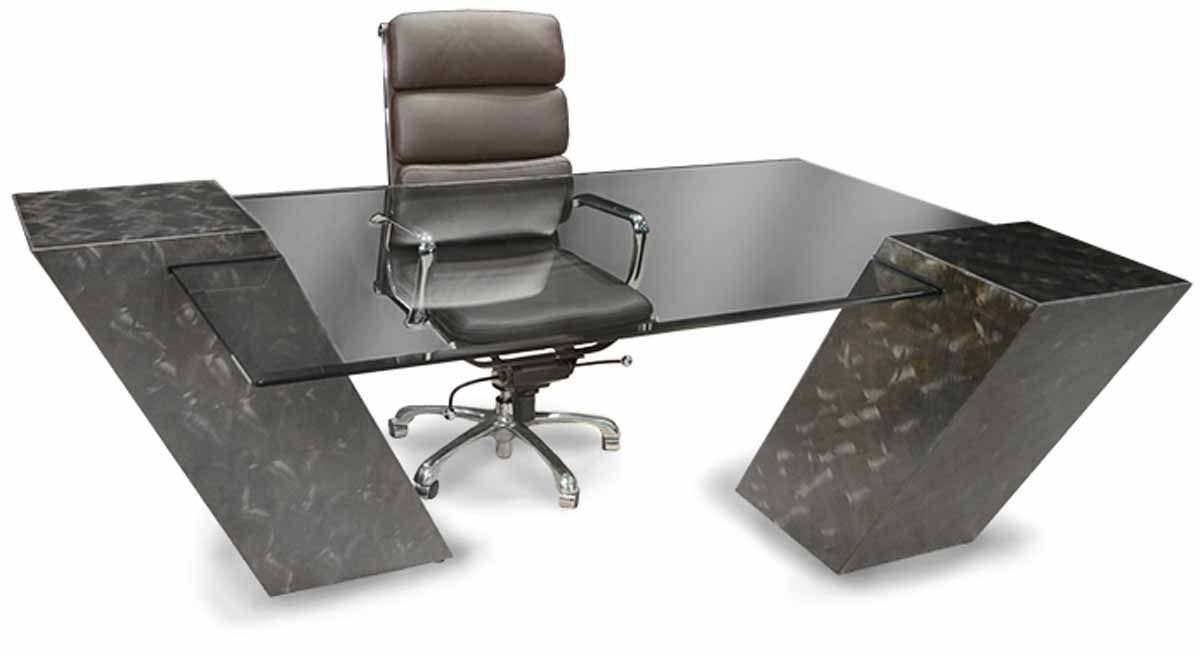What to Consider When Buying an Indoor vs. Outdoor Ceiling Fan
Ceiling fans are ceiling fans right? Not really. There are many differences between indoor and outdoor fans. When you’re shopping for a new ceiling fan for your space, you need to look for different things depending on if your fan is for the outdoors or indoors. If you place an indoor fan outside you may actually risk the safety of yourself or your home because of fire hazards. From the materials used for the blades to the cords attached to the actual fan, you need to understand the main differences between an indoor and outdoor designed fan before purchasing one for your home. More than a furniture store in Scottsdale, Thingz offers a wide variety of sleek and modern ceiling fans to complete your contemporary Arizona look.
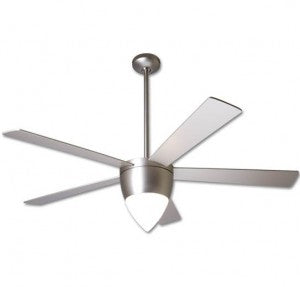
Nimbus Fan, a damp rated contemporary fan with lighting, available from Thingz.
Outdoor Fan Shopping
When deciding to add a fan to an outdoor space you need to know a few things about how the fan is designed and how it differs from other indoor fans. The main difference between an outdoor fan and an indoor fan is the materials in which they are made of. Outdoor fans are made of materials that can withstand high winds and weather elements. Indoor fans aren’t equipped to handle moisture and winds. Outdoor fans must also use a stronger motor to cool your open space.
Damp Rated vs. Wet Rated
There are two main types of outdoor fans: damp rated and wet rated. Damp rated fans are perfect for outdoor areas that are covered and protected from heavy rain. Damp rated fans can resist dampness to an extent but cannot handle rain that falls directly on them. Wet rated fans can withstand heavy rains and can even be washed off with a hose. The wiring of both of these outdoor fans is made with special protectant.
It’s important to use an outdoor fan in an outdoor area. If you place an indoor fan in an outdoor space and it gets wet, it can become an electrical fire hazard. Outdoor fans specifically have bigger blades than indoor fans because they offer more air movement in hot air. Wood blades are avoided with outdoor fans because the wood will warp with exposure to water. This warping will not only affect the aesthetic value of the fan but its usefulness. Outdoor fans can be used indoors. Spaces in the house that are bent towards dampness such as a bathroom and laundry room should use an outdoor damp rated fan.
Check our bestsellers!
Indoor Fan Shopping
Indoor fans aren’t nearly as specific as outdoor fans. Indoor fans come in all different aesthetics and can be wooden. Without the worries of being water and weather resistant, the purchaser can focus on the fan’s style, lighting option, and airflow. When hanging fan, it should be hung at least seven feet from the floor and 18 inches from the walls. If the ceiling height allows, the fan should be 8 to 9 feet above the floor to get the most of its cooling ability. If you live in a home where the ceilings are vaulted or extra high, you’ll need to invest in a down rod to lower your chosen ceiling fan so that you will feel the air movement. Hugger or flush mount fans are designed for rooms that have lower ceiling heights. Hugger fans are closer to the ceiling and will not move as much air.
General Fan Shopping
The airflow of a fan is measured by the CFM otherwise known as the cubic feet of air per minute. The higher the CFM, the cooler the air feels that the fan puts off. A ceiling fan doesn’t change the room’s temperature; it simply makes the wind chill feel cooler. The average CFM of an outdoor fan needs to be higher than an indoors. Outdoor fans produce CFMs that range from 3,000 to 10,000. A great fan will produce a CFM of 6,000-9,000. If you find your space is too large for just one fan, you can hang two identical ones to put off more wind chill.
5 Basic Factors to Consider
There are many factors to consider when determining the best size ceiling fan. Blade pitch, blade shape and size, RPM, height from ceiling, and the motor are the five basics. It is the combination of these factors that gives you the best fan for the job.
Blade Pitch: This is the angle of the blade as it sweeps through the air. A greater pitch gives you greater movement, but it takes a stronger motor.
Blade Shape & Size: The wider and longer the blade is the more effort it takes to turn as well. There is a limit to the shape and size that the fan blades should be. If they are too wide or too long, they will not be effective even with the most powerful fan motor.
RPM: This is how fast the blades spin which generally means more air but only if the blades are pitched properly.
Height from Ceiling: Fans need adequate height between the blades and the ceiling. 10 to 12 inches is best, but hugger fans for a shorter space are usually 7 to 8 inches from the ceiling, thus huggers will not give you the best performance.
A well-engineered ceiling fan will take all these factors into account to give you the best performance. This is an investment that will keep your home cooler longer with less cost than running an air conditioner. In your outdoor spaces, outdoor fans are the best way to keep the temperature down. When you compare indoor and outdoor fans, remember that an indoor fan can never be successfully installed in an outdoor area. No matter what material, an indoor fan’s lighting and materials aren’t made to stand up to the weather. On the flip side, an outdoor fan can be successfully installed in an indoor space and works really well in homes that are exposed to salt water and damp rooms.
Our categories
The post What to Consider When Buying an Indoor vs. Outdoor Ceiling Fan appeared first on Thingz Contemporary Living.

